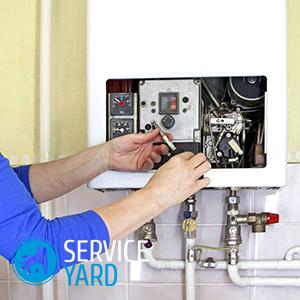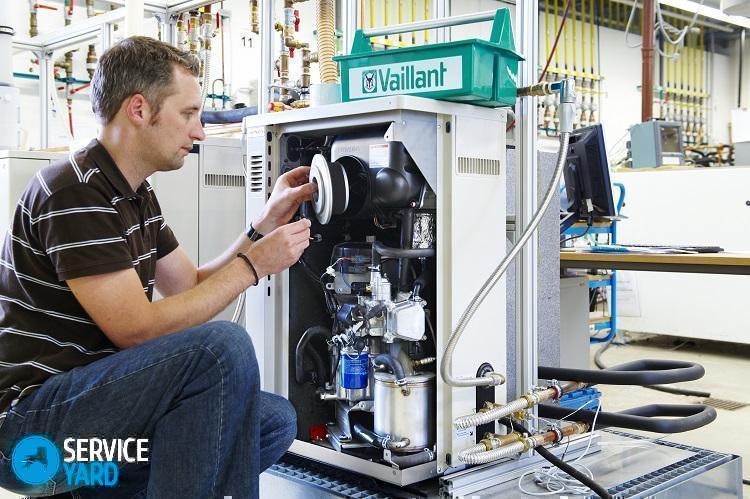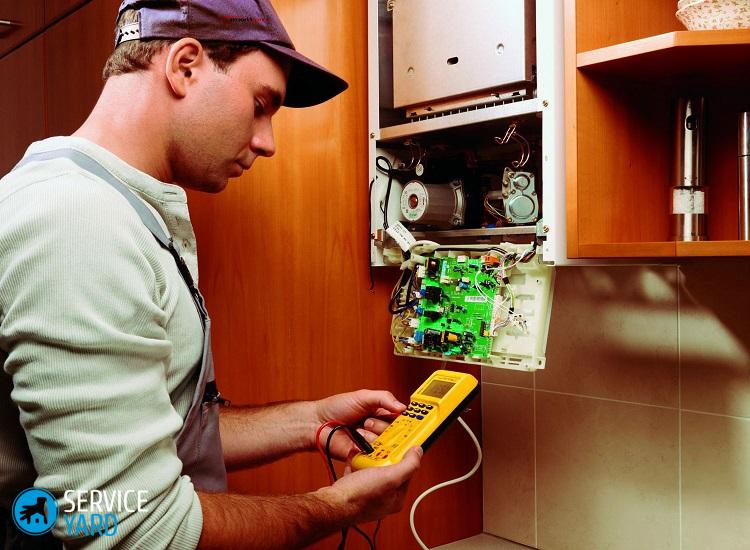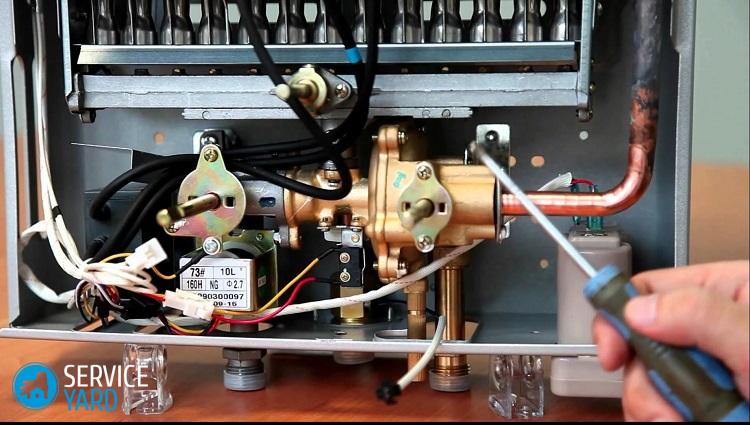DIY gas boiler repair

Gas boilers today are in enviable demand, they have a high level of functionality. But at the same time, over time, their performance decreases dramatically, and such problems lead many users into a dead end. To avoid unforeseen repairs, timely maintenance of these devices is necessary. If you have any difficulties, then you can repair the gas boilers with your own hands. In this article, we will present ways to eliminate typical malfunctions of such devices.
to contents ↑The device of gas boilers
In fact, any part of the boiler can break, because there are a lot of reasons for this. Most often this happens due to poor-quality assembly of nodes, improper operation and the ingress of foreign objects into the expansion tank. Be that as it may, before you repair the gas boiler, understand its structure. Particular attention is recommended to be paid to the safety group, which is responsible for the correct operation of the devices.

These elements include:
- Traction sensor with a plate that is designed for 75 degrees. This device monitors the operation of the chimney of the boiler, it responds to any malfunctions in the discharge of combustion products into the chimney and their exit from the smoke trap.
Important! In case of malfunctions, the device heats up, starts to work, so many equip it with an additional gas detector.
- Protective Monostat. It protects boilers from incomplete smoke removal due to clogged chimney or heat exchanger.
- Limit thermostat. He is responsible for controlling the water in the boiler - as soon as it boils overheating sensor, it immediately turns off the device.
- Ionization electrode. This element controls the presence of flame. Repair of many boiler models begins precisely with checking the electrodes, because if the device starts working without a flame, it may explode.
- Pressure control valve The system forces the device to discharge hazardous excess when the pressure exceeds 3 bar.
to contents ↑Important! If any of the listed sensors fails, then the residents of the house can breathe carbon monoxide lost by the system. An improper operation of the electrode may cause an explosion.
What should be considered when repairing a gas boiler?
Modern boilers are a fairly complex household devices. As we have previously specified, even a minor malfunction can lead to an explosive situation. Therefore, if you are not confident in your abilities, it is better not to undertake the repair yourself.
When repairing a gas boiler, the following factors must be considered:
- If the room is filled with smoke or there is a clear smell of gas, you should immediately turn off the device, open all windows and doors.
- It is quite possible to repair the device on your own if, for example, it is necessary to replace a broken combustion sensor. It is enough to disconnect it from the gas supply, then let it cool completely, check for traction, and restart.

Important! If you plan to check for traction, first make sure that the room does not stink of gas. Then bring a sheet of paper to the chimney, if it does not move, then there is no draft. In no case do not turn on the boiler, immediately call the master.
- Basically, such devices fail due to clogging of the heat exchanger.It is easy to solve this problem: in order to repair the heat exchanger of a gas boiler with your own hands, you just need to clean it.
Important! If the automation broke down, then you can’t do without a professional here.
- When the nozzle supplying fuel is clogged, it is enough to disconnect it from the system, thoroughly clean and rinse, then dry and return to place.
- If a flame that constantly burns in standby mode dies out, then use the instructions and check the condition of the unit.

Troubleshooting typical gas boilers
Of course, it’s not worth repairing the gas boiler control board with your own hands, because, as we found out, it consists of a large number of elements responsible for the safe operation of the device. If the problems were typical, then feel free to get down to business.
Perform troubleshooting according to the instructions:
- Heat exchanger. This is the weakest and most problematic part of the boilers, which is made of copper or stainless steel. It should be cleaned once a year from accumulated soot with an ordinary metal brush. The metal dishwashing sponge is ideal for this, as it is more gentle and gentle.
- Boost fan Even though the fans operate at the lowest speed and constant current, they are rare, but break. The most problematic places are bearings. If you find that the fan has stopped developing the required number of revolutions, then first of all disassemble the boiler, remove its back, then pull out the stator and lubricate the bearings with machine oil.
- Chimney. Often, it is the coaxial chimney that becomes clogged and the appliance ceases to function normally. To fix the problem, it is necessary to remove it from the system, thoroughly clean each part from soot, then return everything to its place.
- Valve. Doing the gas valve of a gas boiler with your own hands is even easier - just purchase a new part and replace the failed element with it.
to contents ↑Important! A gas boiler is a potentially hazardous equipment that, if operated improperly and if the problems are not addressed promptly, can behave unpredictably.
Stock footage
Remember that prevention is the best repair. Each device needs annual maintenance, which is carried out before the start of the heating season. All items mentioned in the article are subject to inspection for serviceability.
- How to choose a vacuum cleaner taking into account the characteristics of the house and coatings?
- What to look for when choosing a water delivery
- How to quickly create comfort at home - tips for housewives
- How to choose the perfect TV - useful tips
- What to look for when choosing blinds
- What should be running shoes?
- What useful things can you buy in a hardware store
- Iphone 11 pro max review
- Than iPhone is better than Android smartphones



